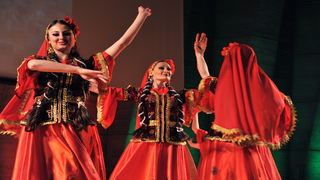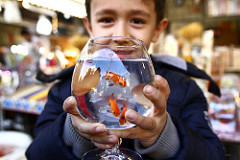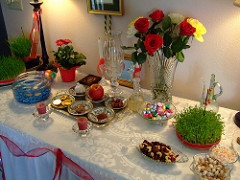Nowruz- Persian New Year
March 20th, 2017

Background of Nowruz
Nowruz is the Persian New Year and is celebrated in Iran and also in Iraq, India, Afghanistan, Tajikistan, Uzbekistan, Azerbaijan, Kazakhstan, and Kyrgyzstan. It is celebrated every year on March 20 or 21st. The traditional festival of spring happens at the exact moment of the vernal equinox - ie when spring starts and the sun moves into Aries.

Pronounced “NO-rooz”, it is spelled differently in different countries but means basically “new day” and has been celebrated for 3,000 years and is observed by around 300 million people around the world.
The festival lasts 13 days and in common with so many other world celebrations in Spring, as we have seen with Holi and Lunar New Year it celebrates renewal, peace, friendship and good neighbourliness. Indeed some people believe that how you act on Nowruz affects your year - if you are friendly and kind to other people you will have a good year and if not, then you will have bad luck. Also, similar to in other cultures, spring cleaning called “Koneh Takooni” will take place in homes celebrating Nowruz, to get rid of the old and dirt and start the new year fresh and clean.
To welcome Nowruz, families will sit together and wait for the exact moment of the equinox, whether it is day or night. This year it will occur at 1.58 pm in Iran (6.29am ET). Click here for an online countdown to Nowruz.

Haft-Seen
On the first day of Nowruz, families gather round the “Haft-Seen” which is a tabletop arrangement of seven symbolic foods all starting with the letter “seen” from the Persian alphabet (the 7 “s”). Including apples(sibs), sumac, grass (sabez), vinegar (serkeh), garlic (seer), sweet paste from germinated wheat (samanu) and sea-buckthorn.
There are also items on the tabletop that do not start with the letter “seen”, such as mirror (ayyeneh) and goldfish. They symbolize lighting and blessing for the new year ahead. Most often, people complete the table with a religious book such as quran or the torah, or even books from the ancient iranian poets.
Traditional Food
Other than the “seen” items, families usually prepare a large meal after the equinox as a feast before the following 11 days. One of the commonly prepared dish is called Sabzi Polo ba Mahi, which is rice with herbs topped with fried fish that represents prosperity. After the festivities, families would substitute some of the eaten haft-seen items with coins and wheat sprouts.
In fact, Iranians around the world are sharing their ways of cooking traditional dishes for Nowruz. You can find delicious Persian recipes for Nowruz here, here and here.
ABOUT THIS PAGE
Psiphon Today is brought to you by Psiphon Inc. Please visit our Privacy Policy, and find out how you can contact us.


